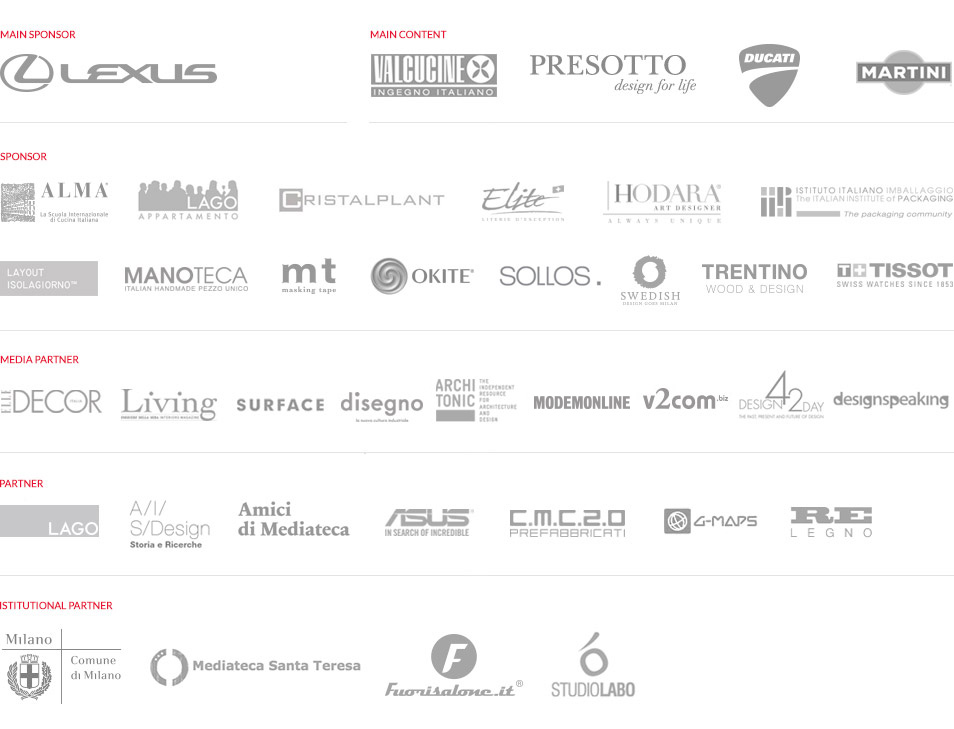How important is the Design District concept to you? What is the strategic value for an international city such as Milan or Miami?
At its best, a design district presents a collaborative moment that brings together a city, a population, and creative and commercial industries and organizations for mutual benefit and inspiration. A design district can also provide a curated experience, which allows any city to tell the design stories it deems most important and to offer a particular point of view or context. By its nature, design is accessible and easily relatable, which makes it a perfect draw for a diverse audience.
L’ArcoBaleno provides a new format for communication and promotion of design / project culture. How does the online forum best benefit design brands? What online tools do you find most useful?
We created L’ArcoBaleno to celebrate design on a global platform, making it accessible to a worldwide audience. We’re also aligning content with commerce: The site is carefully curated, which means that every piece we choose is incredibly high quality; at the same time, we’re providing layers of editorial context so our readers understand the pieces’ importance, the process and stories behind them, and what makes them so valuable. By combining the best of both worlds—traditional and more contemporary media—we’re able to celebrate design from a variety of angles.We offer longer form, in-depth editorial by a talented roster of writers and photographers that allow our readers to delve deep into the people, places, and ideas shaping design culture. At the same time, we feature more spontaneous elements like daily blog posts, videos, and an Instagram feed, which allow us to communicate on another, very visual level; these are powerful tools for keeping our readers up-to-date on the work we see and the people we meet. In its entirety, it’s like a design universe.
What are your thoughts on video as a format for web-promotion of design pieces? Do you think it is a vital tool in the presentation of a work? Do you currently use video on L’ArcoBaleno / do have plans to integrate video further?
We do plan to develop more video content for L’ArcoBaleno. I think video is the most powerful and immediate tool one can use to communicate today; it is beautiful, engaging, and fast. It can be both educational and entertaining, and it allows for very fast dissemination of information, which is perfect for our fast-paced world. Beautiful/interesting/fast.
With Design Miami as a reference point, how do you think the fusion of Design with the Art and Fashion industries will affect the evolution of the Design market?
Each creative realm carries its own strengths, and it’s great to be able to combine them into a much more complete and multifaceted experience. And by bringing them together, you have the opportunity to speak to a much broader audience. There is so much cross-pollination between the creative fields these days—in film, art, fashion, music, architecture, etc.—it encourages new perspectives and innovation.
What do you look for when choosing designers and objects presented for sale on L’ArcoBaleno?
The most important criteria for me are quality and soulfulness—things that I believe will stand the test of time and that carry a feeling that resonates beyond the intellectual analysis. I’m always looking for things that are really beautiful, really practical, and especially things that are both simultaneously. I get especially excited when things also offer a fresh approach. And I love to support emerging talent and exceptional artisans from around the globe.
How does the Internet contribute to the larger conversations within contemporary design culture? For instance, do you think it opens a dialogue between established master works with contemporary styles? In what way?
The ecosystem of the design world is fed by the media, shops, galleries, studios, fairs, and auctions, and the internet is now the fundamental portal to keep up with everything that’s happening globally. It’s so great that the young designer in Korea knows about the new products from design superstar in London who’s aware of up-and-coming tech-driven creatives in LA who are inspired by craftsmen in Japan. It’s exciting because there are ever greater opportunities to share, collaborate and discover new perspectives.
What are your thoughts on the cross-pollination of design and art? Do you see this as a temporary phenomenon, or something more meaningful?
The two realms still operate quite separately, but they certainly complement each other. I would add craft into this cross-pollination discussion as well. It’s wonderful to see the audiences for each growing and overlapping. Individual artists, designers, and makers today have the freedom to work however and wherever they choose. So it’s easy to find similarities between certain art, design, and craft pieces—especially when they’re made by hand—but they’re not necessarily trying to achieve the same goals. This diversity of creativity makes the world a much more interesting place.
Ambra Medda photo / credit Martien Mulder
